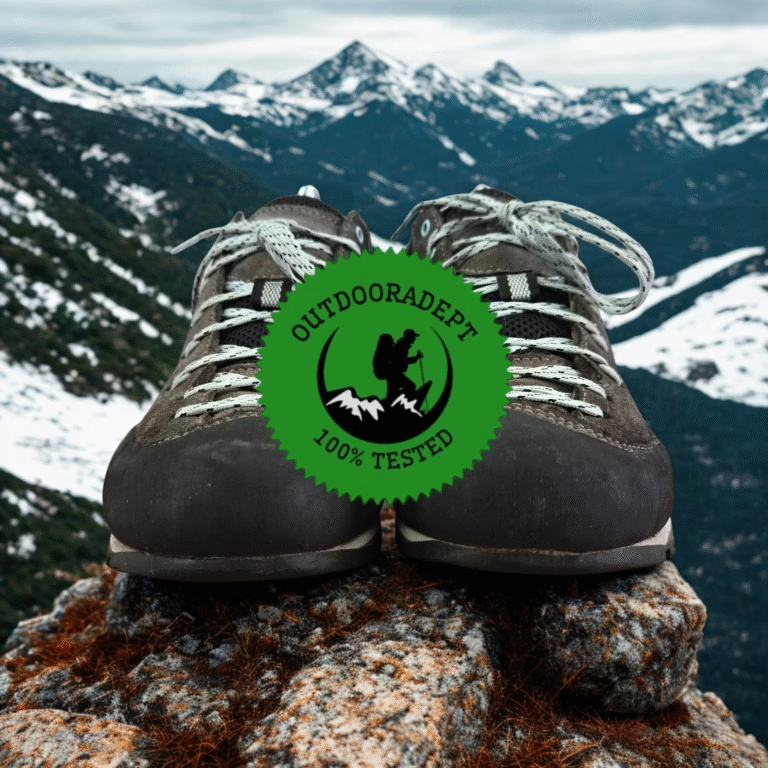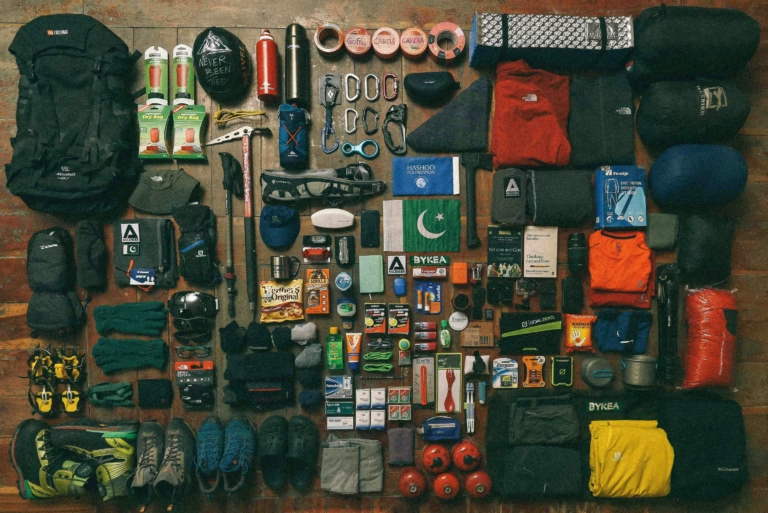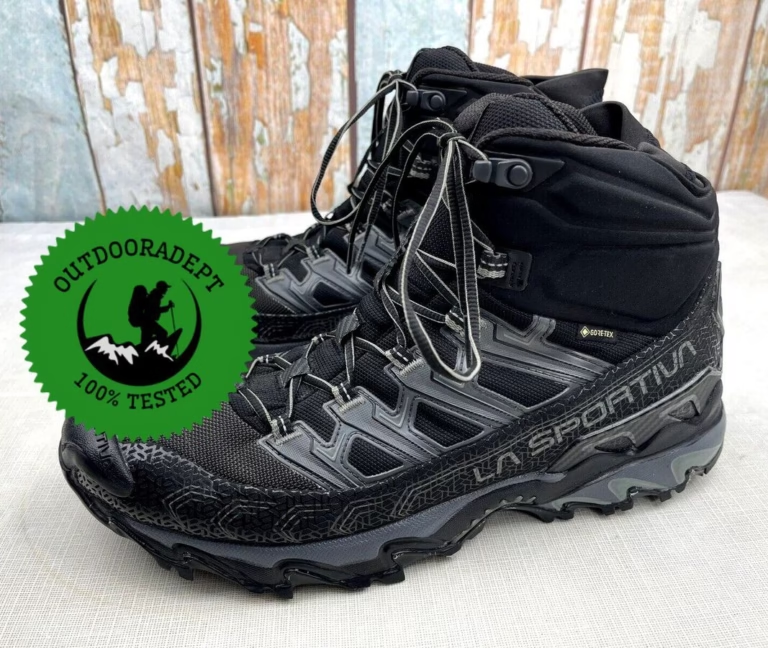Every year in Yosemite National Park, about 216 folks go missing and need saving, says a recent Statista report. Hikers who aren’t ready often find themselves in a pickle.
Even though maps and GPS are good, they can fail. Batteries die, phones get wet, and sometimes, the signal disappears. That’s where the compass comes in.
In this article, I’ll share my tips on using a compass for hiking, covering everything from understanding declination (which isn’t as scary as it sounds) to taking and following bearings like a pro.
With these simple compass instructions, I promise you won’t get lost again. Let’s dive in and learn how to master a hiking compass!
How Do You Use a Compass for Hiking?
To use a compass while hiking, lay it flat, point the arrow towards where you want to go, and turn it until the needle matches the north arrow. Check the degrees for your direction. Before starting, consider declination for accurate readings.
I know that might sound complicated. But once you get to know the components and steps, things get a lot clearer. Just follow my lead on this!
1. Account for Declination
Ever wondered why your compass might lead you astray on a hike? It’s all thanks to a quirk called declination – the difference between magnetic north (where your compass points) and true north (the direction on your map).
Ignoring it can turn a leisurely trek into an unwanted detour. I know it because it happened to me.
There are three ways to find out declination:
1. Use your map: Your trusted map holds the key. Look for a declination diagram, usually a small compass rose near the legend. It’ll show the angle between magnetic and true north (in degrees with “E” or “W”). Add the value if it’s east, and subtract if west. This ensures your bearings align with true north, not just magnetic pull.
2. Tech Tools: You can also download a declination calculator app, which is fun to use as it gives you the declination number instantly. No need to decipher tiny map symbols. However, I recommend doing your research to find a reliable one that does regular updates, or you may find yourself off track. As a recommendation, I’m using the Variation app which is daily updated.

3. Do a quick search online: I have magnetic-declination.com bookmarked on my phone, and you should do the same, at least for the first few times when you use a backpacking compass. This website lets you pinpoint your location and see the declination value in real-time. Useful for spontaneous adventures where maps aren’t handy.
Bonus Tip: Double-check declination, especially with older maps. Declination changes over time, so an outdated map might lead you astray. A quick online search or app can confirm the current value for your area.
2. Take a Bearing
Now that we’ve tamed declination, let’s delve into bearings. There are two ways to take a bearing:
From a Map
- The first step is to position your backpacking compass on the map. When doing the positioning, I make sure to align the straight side of the baseplate precisely between my current location and the destination. This step ensures an accurate starting point.
- Make sure the direction of travel arrow points in the general direction of your desired location. It sounds basic, but overlooking this can lead to unnecessary detours.
- By rotating the bezel, align the orienting lines with the map’s grid lines, and ensure the north marker points north on the map. This step sets the stage for a reliable bearing.
- Glance at the index line to read the captured bearing.
- Holding the hiking compass with the direction of the travel arrow facing away, rotate your body until the needle aligns with the orienting arrow. Now, you can start walking.
In the Field
- When taking a bearing in the field, I start by identifying a landmark visible both in my surroundings and on the map. It can be a distinctive rock, a towering tree, or a unique bend in the trail. These visual cues can reinforce compass reading and make navigation even more intuitive. It’s a practical way to cross-reference your location.
- Hold the compass flat, with the direction of the travel arrow pointing at the landmark – this is crucial to lay the foundation for a reliable bearing.
- Rotate the bezel to fit the needle inside the orienting arrow.
- Check the index line for the captured bearing.
- Transfer to map – Lay the hiking compass on the map, align one corner with the landmark, and rotate the baseplate to match the orienting lines with the map’s north/south. Draw a line along the straight to seal the deal.

What Are the Components of a Hiking Compass?
I know that I kept talking about bezels and index lines, which are terms a beginner may not understand. It’s time to shed some light here, so let’s do a quick anatomy of the compass.
1. Base Plate
This sturdy, clear plastic plate holds the compass housing and serves as a protractor. Etched scales and rulers (inches, centimeters, or map scale) help measure distances on your map and translate them to real-world steps.
My advice is to choose a base plate large enough to comfortably hold your map.
2. Magnetized Needle
This red or white arrow points towards magnetic north, thanks to magnetism. But remember, magnetic north and true north differ (declination). Ignoring this difference can lead you astray.
Use your map’s legend or online resources to factor in declination before relying solely on the needle.
3. Direction-of-Travel Arrow
This arrow, usually on the base plate, is crucial for following bearings. When taking a bearing from your map, line it up with your desired travel direction. This becomes your reference point to stay on track, even in confusing terrain.
4. Rotating Bezel
Marked with 360 degrees, this freely rotating ring lets you set precise bearings and measure angles. Choose a bezel that’s easy to grip and turn, even with cold or gloved hands.
Trust me, fumbling with a frozen bezel in the middle of nowhere is no fun! I always look for smooth, secure rotation for accurate readings.
5. Index Line & Orienting Features
The index line (a thin mark on the base plate) works with the orienting features (arrow or lines on the bezel/base plate). Their purpose? Aligning the compass with the map’s north-south lines.
This ensures accurate bearings, even if magnetic north pulls the needle slightly off-course.

Bonus Tip: Invest in a compass with luminous markings. They’ll be your guardian angels when navigating in low-light conditions.
Why Is Useful to Know How to Use a Compass?
Knowing how to use a compass can help you when you get lost at confusing turns or take the wrong shortcut. But beyond just emergencies, mastering a compass unlocks a whole new level of freedom and confidence on the trails. Here’s why:
1. Independence from fickle electronics: Imagine this: you’re miles deep in a national park, your phone dead, and the app you were using to navigate conks out. With a compass and a map, you can still orient yourself, plot a course, and find your way back – no panic, just self-reliance.
2. Confidence to explore off the beaten path: With the ability to navigate using topographical maps, you can confidently venture off marked trails, discovering hidden waterfalls, secluded campsites, and breathtaking vistas that most hikers miss.
3. A deeper connection to the landscape: When you rely solely on technology, you become a passive observer. But using a compass and map forces you to actively engage with the terrain, studying contours, landmarks, and your own position. For me, this provided a deeper understanding and appreciation of the landscape, something I used to ignore during my first years of hiking.
4. A skill that impresses your crew: Let’s face it, there’s something undeniably cool about whipping out a compass and confidently navigating your group through a tricky section of trail. It not only empowers you but also inspires trust and admiration from your fellow adventurers. Bonus points if you can teach them a thing or two!
Can You Use Your Smartphone as a Compass?
Your smartphone can work as a compass, as most modern phones boast a magnetometer, a sensor that detects the Earth’s magnetic field. With the help of a compass app, this translates to handy directional arrows right on your screen.
Handy, right? But there are caveats:
- Accuracy can be iffy: Metal objects, power lines, and even your phone case can interfere with the magnetometer, leading to unreliable readings.
- Battery drain: I found that compass apps are battery hogs, especially when running continuously. This can be critical on multi-day hikes where conserving power is crucial.
- Limited functionality: Unlike dedicated hiking compasses, smartphones lack features like sighting lines. These are essential for precise navigation, especially with maps.
So, should you ditch the traditional compass? Not entirely. Think of your smartphone compass as a convenient backup. It’s great for getting a general sense of direction or finding your bearings in an unfamiliar area.
But for serious navigation, especially in remote areas, a reliable, dedicated compass is still your best bet.







